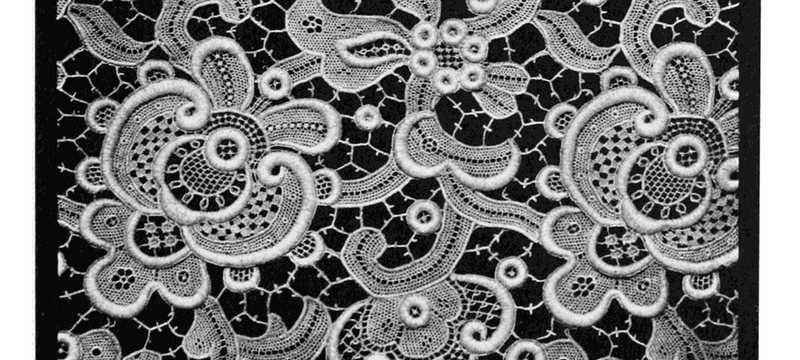Lace is a machine or handmade type of a fabric that is developed from fine threads. The structure or pattern of a lace fabric resembles that of a carefully decorated open web. It can be termed as an expensive and a luxurious piece of item because it consumes a lot of time to make one. Very few people would afford them in the ancient times and anyone who wore them was recognized as very wealthy in the society. It was seen as a symbol of prestige.
The history of lace dates back in the 2500BC, however, no date can be assign as the specific date of origin of lace. Several writings have been put in place to try explain its origin and the lace trade in general. The first piece of lace existed as a piece of hair knot. Lace pieces were found in parts of Thebe and Egypt, which is the home of ancient technology. The lace in the form of hair knot had porcelain beads amongst their meshed network.
In those years, the lace was made through braiding.
In the 12th and 13rd century, lace started becoming common among the people and lace garments were made to respected churchmen and leaders.
In the 16th, century lace making became widespread. Theories have been put in place to try track down the origin of lace, several of them indicate that lace making started in Venice, Genoa and Ragusa though there is also another theory that claims lace to have been brought from china.
The different places had different patterns to of lace making. The different types of lace are; the bobbin, braid, netting, tape, embroidery, needle lace among others. In Venice, the lace was developed from linen threads that were spun from fine flax. The fine flax originated from the coastal regions of Belgium and France where it was cultivated. However, the quality of flax nowadays has diminished owning to the modern fertilizers which have made the fibers no longer fine.
Italy became the main producer of laces in the 16th and the 17th century with Venice becoming the main centre of this business. The main type of lace produced was the needle lace which was made from fine pulled thread work, resulting into a finely polished end product. In the 17th century lace making flourished in most other parts of the Europe.
Bobbin lace originating from Genoa has developed over time resulting to the current Maltese, Bedfordshire and Cluny styles. These styles require like a 1,000 tallies to produce a polished product.
Despite this, bobbin lace is most dominant in Belgium. It is also known as pillow lace. The very first pictures of this lace were found in an Italian family in the year 1476.
In the 17th and 18th century lace production reached its climax. At this time it was seen as a sign of richness and prestige. It was mainly used to decorate accessories, clothing’s, underclothing, and costumes worn by the religious and the military. Also other household linen were not off this fashion, the mats and tablecloths were decorated too.
Today, production of lace has continuously raised, owning to their large demands. Despite that machines have been devised to the making of lace, traditional methods of using needles are also dominant.
If you need Security Camera Installation Austin TX call Net Solutions & Security!
